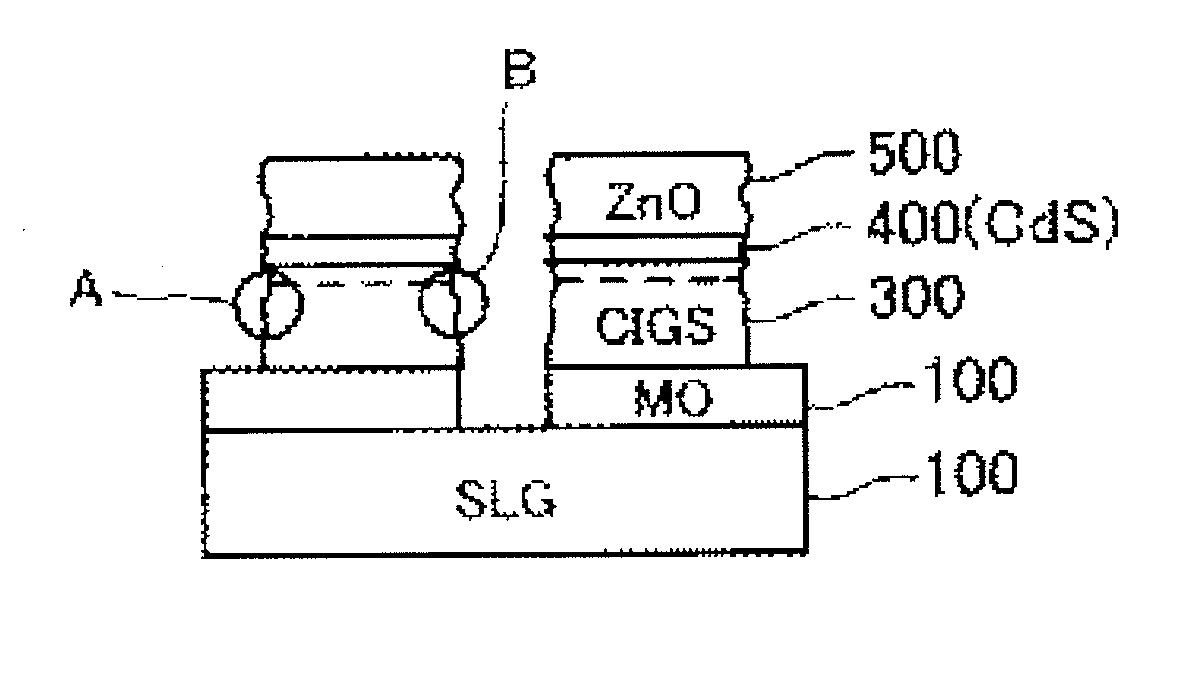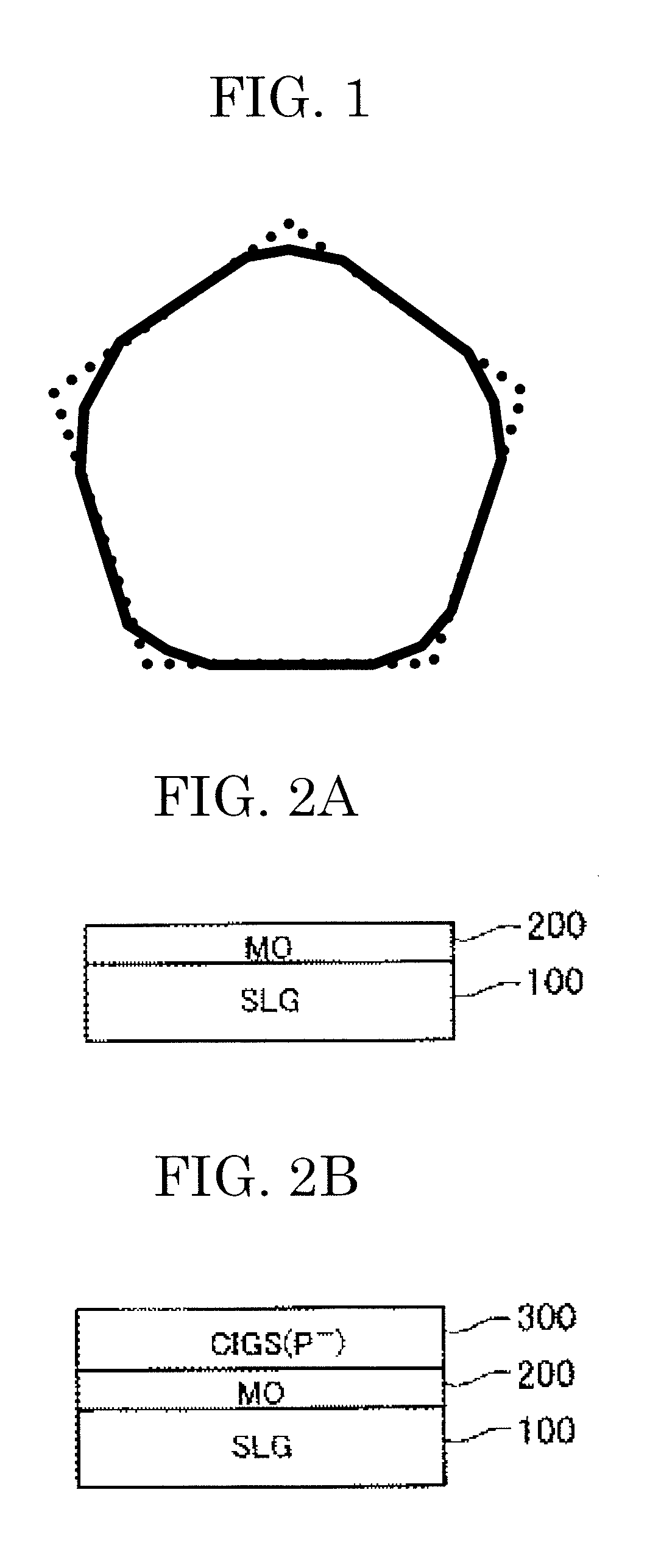Photosensitive composition, transparent conductive film, display element and integrated solar battery
- Summary
- Abstract
- Description
- Claims
- Application Information
AI Technical Summary
Benefits of technology
Problems solved by technology
Method used
Image
Examples
synthesis example 1
[0197]Methanol (167 g), ethyl acetate (333 g), benzyl methacrylate (130 g), KAYARAD TC-110S (product of NIPPON KAYAKU Co., Ltd.) (30 g), 2-hydroxyethyl methacrylate (20 g), methacrylic acid (20 g), azobisisobutyronitrile (1 g) and thioglycolic acid (3 g) were mixed and stirred, followed by polymerizing at 65° C. for 6 hours. The liquid obtained after the polymerization was added to cyclohexane (3,000 g) for precipitating the formed polymer. After the supernatant had been removed through decantation, the precipitate (polymer) was dried under vacuum at 40° C. for 20 hours, to thereby obtain 138 g of polymer.
[0198]The obtained polymer was found to be a random copolymer in which the amount of benzyl methacrylate was 56 mol %, the amount of KAYARAD TC-110S was 8 mol %, the amount of 2-hydroxyethyl methacrylate was 13 mol % and the amount of methacrylic acid was 23 mol %.
[0199]The obtained polymer was found to have a weight average molecular weight (converted to polyethylene oxide) of 7,0...
synthesis example 2
[0201]Methanol (167 g), ethyl acetate (333 g), benzyl methacrylate (100 g), KAYARAD TC-110S (product of NIPPON KAYAKU Co., Ltd.) (90 g), 2-hydroxyethyl methacrylate (5 g), methacrylic acid (5 g), azobisisobutyronitrile (1 g) and thioglycolic acid (3 g) were mixed and stirred, followed by polymerizing at 64° C. for 6 hours. The liquid obtained after the polymerization was added to cyclohexane (3,000 g) for precipitating the formed polymer. After the supernatant had been removed through decantation, the precipitate (polymer) was dried under vacuum at 40° C. for 20 hours, to thereby obtain 123 g of polymer.
[0202]The obtained polymer was found to be a random copolymer in which the amount of benzyl methacrylate was 56.6 mol %, the amount of KAYARAD TC-110S was 31.5 mol %, the amount of 2-hydroxyethyl methacrylate was 4.3 mol % and the amount of methacrylic acid was 7.6 mol %.
[0203]The obtained polymer was found to have a weight average molecular weight (converted to polyethylene oxide) o...
synthesis example 3
[0205]Methanol (167 g), ethyl acetate (333 g), benzyl methacrylate (70 g), KAYARAD TC-1105 (product of NIPPON KAYAKU Co., Ltd.) (120 g), 2-hydroxyethyl methacrylate (5 g), methacrylic acid (5 g), azobisisobutyronitrile (1 g) and thioglycolic acid (3 g) were mixed and stirred, followed by polymerizing at 66° C. for 6 hours. The liquid obtained after the polymerization was added to cyclohexane (3,000 g) for precipitating the formed polymer. After the supernatant had been removed through decantation, the precipitate (polymer) was dried under vacuum at 40° C. for 20 hours, to thereby obtain 117 g of polymer.
[0206]The obtained polymer was found to be a random copolymer in which the amount of benzyl methacrylate was 42.4 mol %, the amount of KAYARAD TC-110S was 45.0 mol %, the amount of 2-hydroxyethyl methacrylate was 4.6 mol % and the amount of methacrylic acid was 8.1 mol %.
[0207]The obtained polymer was found to have a weight average molecular weight (converted to polyethylene oxide) o...
PUM
| Property | Measurement | Unit |
|---|---|---|
| Percent by mass | aaaaa | aaaaa |
| Length | aaaaa | aaaaa |
| Length | aaaaa | aaaaa |
Abstract
Description
Claims
Application Information
 Login to View More
Login to View More - R&D
- Intellectual Property
- Life Sciences
- Materials
- Tech Scout
- Unparalleled Data Quality
- Higher Quality Content
- 60% Fewer Hallucinations
Browse by: Latest US Patents, China's latest patents, Technical Efficacy Thesaurus, Application Domain, Technology Topic, Popular Technical Reports.
© 2025 PatSnap. All rights reserved.Legal|Privacy policy|Modern Slavery Act Transparency Statement|Sitemap|About US| Contact US: help@patsnap.com



